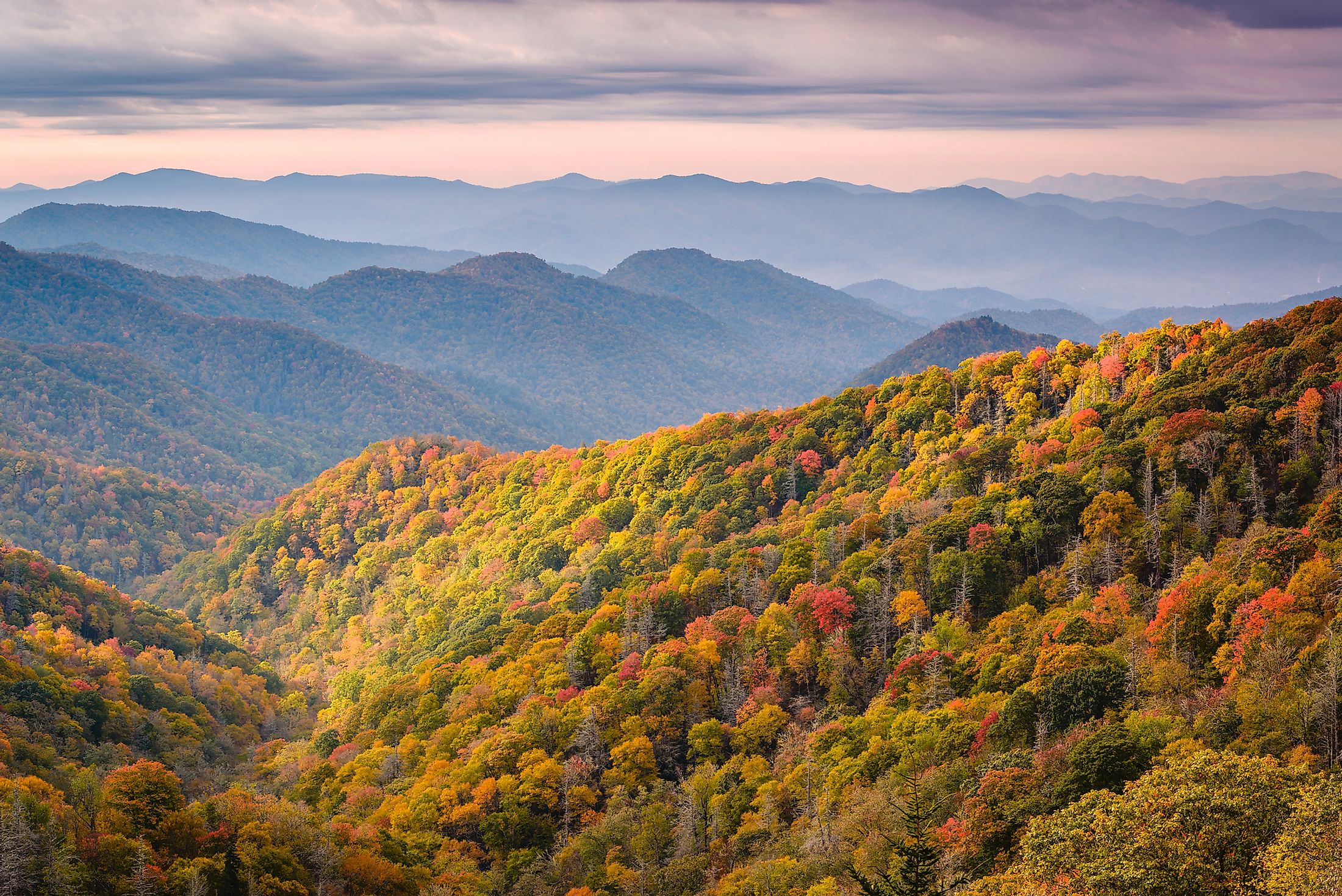
Great Smoky Mountains
The Great Smoky Mountains, popularly known as the Great Smokies or the Smokies, is a mountain chain in the Southeastern United States that runs along the North Carolina-Tennessee border. This mountain chain is one of the subranges of the Appalachian Mountains and is part of the Blue Ridge Mountains forming the Blue Ridge Physiographic Province. The Smokies are major attractions in the Great Smoky Mountains National Park, the most visited park in the United States established in 1934 to protect parts of the range. The mountain range is named “Smoky” because of the smoke-like fog that covers it. Its tallest peak is Clingmans Dome, which rises 2,025 meters above sea level.
Naming
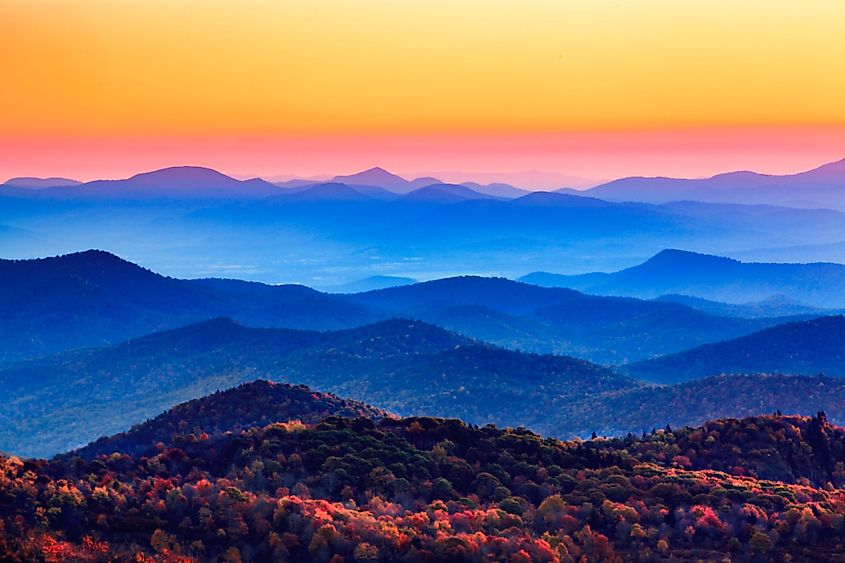
The Great Smoky Mountains is a significant mountain range for the Cherokee people, who traditionally referred to it as “Shaconage,” meaning “the place of blue smoke.” The local tribe named the range so because of the whitish-blue mist or fog that blurs the peaks and their long ridges. When the Europeans came across the range, they simply named it the “Smoky Mountains” for the same reason as the Cherokee people. The word “Great” was only added to the range’s name much later. The whitish-blue haze results from a photochemical process. The terpenes (hydrocarbon) released by the forest plants react with ozone particles in the air to form aerosols. Moisture that condenses on these aerosols is scattered by light wavelength in a blue spectrum, resulting in the whitish-blue mistiness. This same haziness also explains the origin of the name “The Blue Ridge Mountains” and “The Blue Mountains” in Australia.
Geography
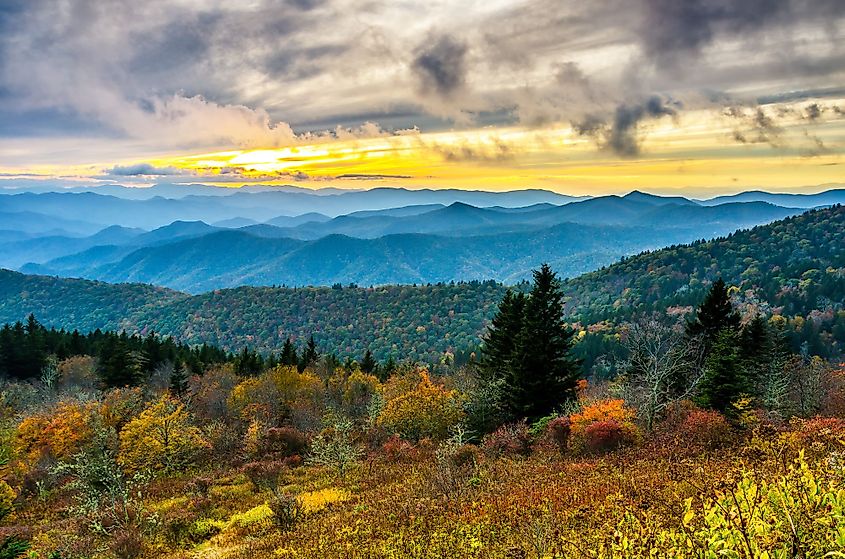
The Great Smoky Mountains is one of the longest subranges of the Appalachian Mountains. This range is located in the Southern Appalachian region and forms part of the Western Blue Ridge Front, alongside the Bald Mountains, Unicoi Mountains, and the Unaka Range. The Smokies are located along the North Carolina-Tennessee border, between the Little Tennessee River and the Pigeon River in the southeast and northeast. The Tuckasegee River flows on the range’s southern end. The range is intersected by Foothills (elongated ridges), including the English and Chilhowee Mountains. The Great Smokies extend into several US counties, including Cocke, Sevier, and Blount in Tennessee and Haywood and Swain Counties in North Carolina.
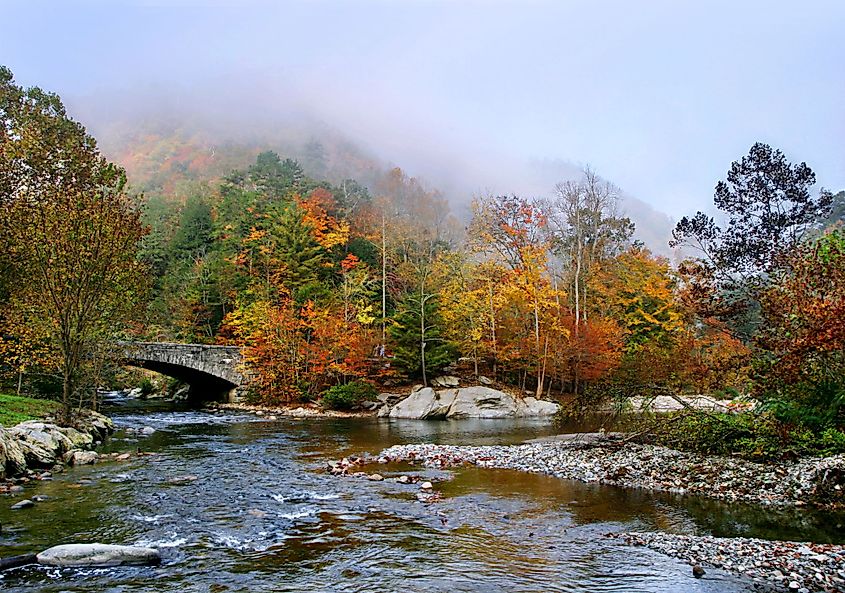
Several rivers originate from the Great Smokies. The Little River is one of the longest streams originating in the Smokies. Although the Little River is 97 kilometers long, the first 29 kilometers meander within the Great Smoky Mountains National Park. Then, it flows the remaining 68 kilometers south before draining into the Tennessee River in Knox County. The other streams flowing out of the Smokies and into the Tennessee River are Oconaluftee and Little Pigeon River. Abrams Creek, Eagle Creek, Hazel Creek, Raven Fork, Roaring Fork, and Cosby Creek also flow from the Smokies. The Little Tennessee River originates in the Blue Ridge Range in Georgia and flows along the Smokies’ southwestern boundary.
Highest Peaks
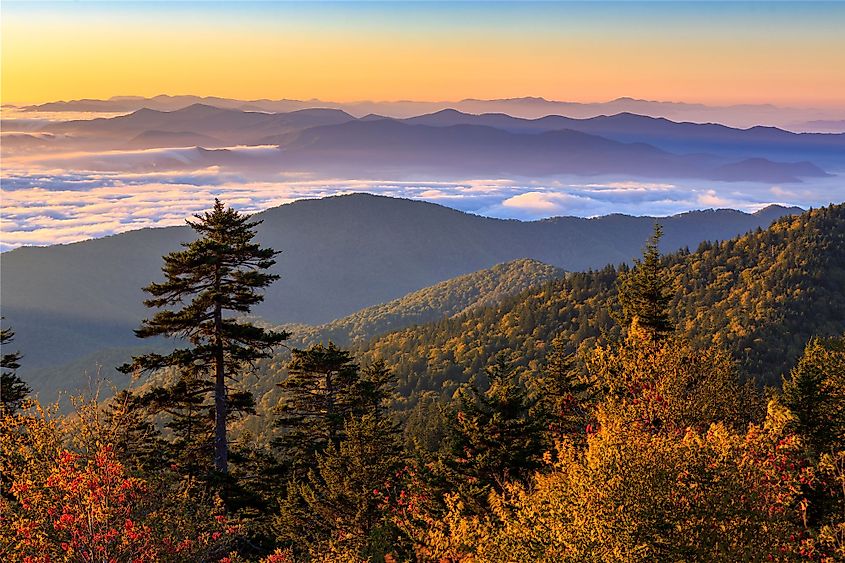
The Great Smoky Range is home to some of the highest peaks of the Appalachian Mountains, with 17 peaks reaching at least 1,500 meters above sea level. However, only three mountains rise above 2,000 meters. The highest Clingmans Dome, is the Eastern US and the Appalachian’s third-highest peak at 2,025 meters, after Mount Mitchell and Mount Craig. This dome has two subpeaks, with Mount Buckley on the west as the higher peak. The other subpeak is Mount Love, rising 1,950 meters above sea level. Clingmans Dome is also the most prominent in the Smoky Mountains, with a prominence of 1,373 meters. Mount Guyot, named after Arnold Guyot, is the range’s second-highest point, rising 2,018 meters above sea level. However, Mount Le Conte is the tallest mountain in the Great Smokies from its base to the summit (3,626 meters). It is also the highest peak located entirely in Tenessee, with a height of 2,010 meters. Other notable mountains include Chapman, Old Black, Luftee Knob, Kephart, Collins, Marks Knob, Tricorner Knob, Hardison, and Andrews Bald.
Plants
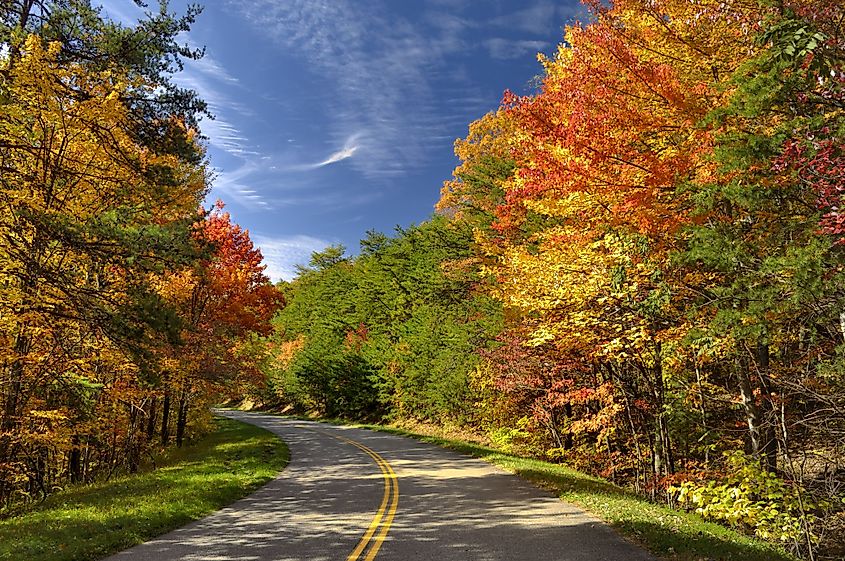
The mountain range forms part of the International Biosphere Reserve and contains approximately 760 square kilometers of virgin forest, the largest old-growth forest in the Eastern United States. However, the extensive logging in the past reduced the size of the range’s forest cover significantly. The mountain range is home to 1,600 flowering plant species, including native trees and shrubs. The range’s three forest zones are cove hardwood, northern hardwood, and spruce-fir forests. The Cove hardwood forest comprises 290 square kilometers of old growth, although a larger portion is old growth. This forest contains over 130 tree species, including yellow birch, yellow buckeye, basswood, and tulip trees.

The northern hardwood forest contains about 116 square kilometers of old growth, dominated by broad-leaved plants. The northern hardwood canopies include American beech, yellow birch, striped maple, mountain maple, white basswood, and yellow buckeye. This forest’s understory is dominated by skunk goldenrod, coneflower Rugels ragwort, hydrangea, and bloodroot. The boreal or spruce-fir forest grows above 1,700 meters and comprises 43 square kilometers of old growth. This forest contains mainly Fraser fir and red spruce, with some red spruce trees estimated to be over 300 years old. Wildflowers also grow throughout the Smoky Mountains and valleys, including Dutchman’s breeches, Solomon’s seal, trilliums, and bee balm.
Animals
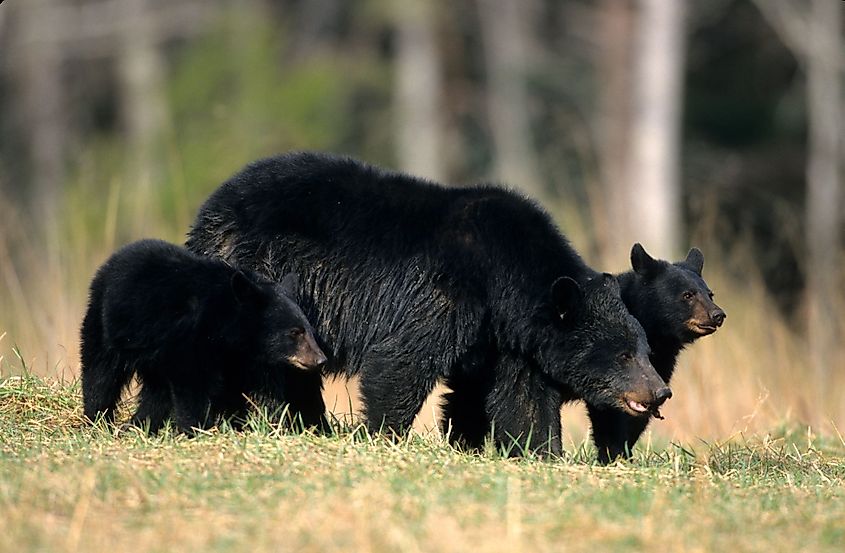
The Great Smokies host over 65 mammal species, 240 bird species, 60 fish species, 43 amphibian species, and 40 reptile species. The black bear is found throughout the range and is currently the wildlife symbol of the Smokies. Besides the black bears, other mammals include bobcat, white-tailed deer, cougars, coyote, wolves, gray fox, red fox, and European boar. The range is also home to several rodents, bats, northern flying squirrels, elk, and river otters.

Several birds frequent the Smokies due to the presence of different forest types. The cove hardwood forests are home to species like wood thrush, red-eyed vireo, northern parula, wild turkey, and ruby-throated hummingbird. Species inhabiting the cooler places include winter wren, dark-eyed junco, yellow-billed sapsucker, and raven. Spruce-fir forest hosts chestnut-sided, Blackburnian, and Canada warblers.
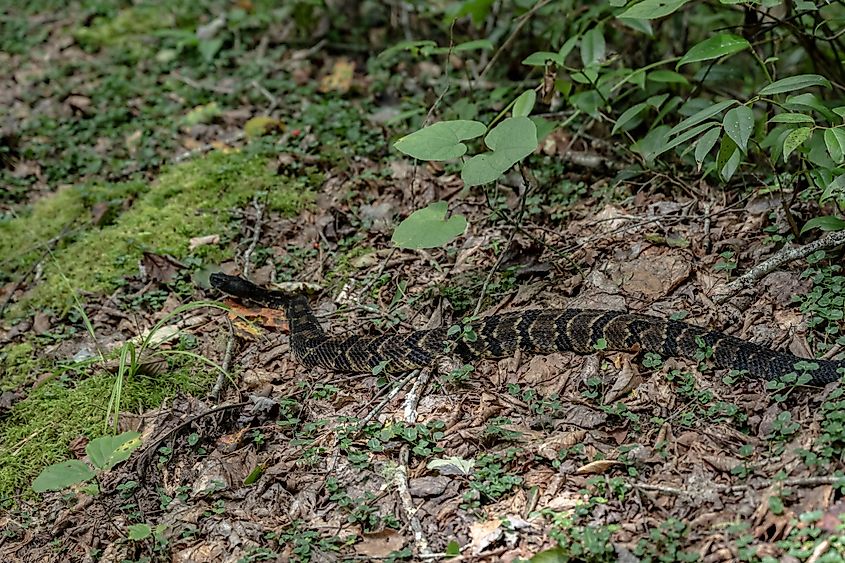
The Smokies are home to two venomous snake species: timber rattlesnake found throughout the range and eastern copperhead. Other snake species include northern water snakes and black rat snakes. Other animals living in the mountain range include five salamander families, eastern box turtles, American bullfrog, American toad, spring peeper, and northern green frog. Fish species found in the rivers and streams flowing from the Smokies include darter, trout, bass, shiner, and lamprey.











